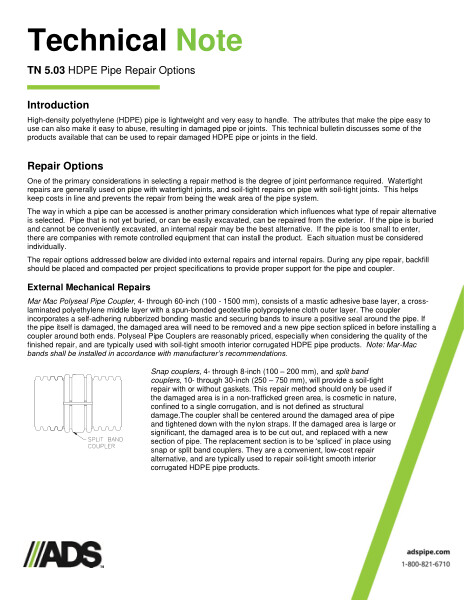TN 5.03 HDPE Pipe Repair Options
Filename:
TN 5.03 HDPE Pipe Repair Options.pdf

This document is the TN 5.03 HDPE Pipe Repair Options. External mechanical repairs, external/internal repairs discussed.
High-density polyethylene (HDPE) pipe is lightweight and very easy to handle. The attributes that make the pipe easy to use can also make it easy to abuse, resulting in damaged pipe or joints. This technical bulletin discusses some of the products available that can be used to repair damaged HDPE pipe or joints in the field.
One of the primary considerations in selecting a repair method is the degree of joint performance required. Watertight repairs are generally used on pipe with watertight joints, and soil-tight repairs on pipe with soil-tight joints. This helps keep costs in line and prevents the repair from being the weak area of the pipe system. The way in which a pipe can be accessed is another primary consideration which influences what type of repair alternative is selected. Pipe that is not yet buried, or can be easily excavated, can be repaired from the exterior. If the pipe is buried and cannot be conveniently excavated, an internal repair may be the best alternative.
External mechanical repairs involve Mar Mac Polyseal Pipe Coupler, Snap Couplers, Split Band Couplers, Concrete Collars and Slip Couplings.
External or internal repairs can be done with field welding damaged sections of the pipe or when cracks are present. Internal repairs use the NCP Internal Joint Seal, Link Pipe Grouting Sleeve and Internal Chemical Sealing.
